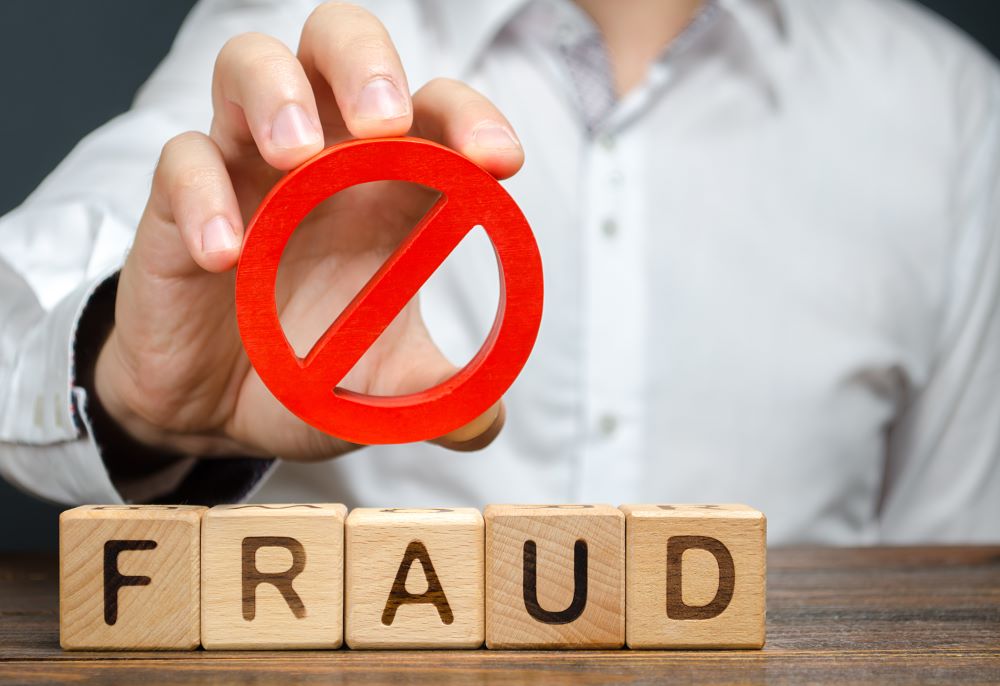
August 16, 2022

Even when most people do the right thing and safeguard the information or assets they’re entrusted with, all it takes is one person to make the wrong decision, and trouble ensues. This is an unfortunate reality that both businesses and organizations alike face every day. It is one thing when a bad decision is made by accident, it is quite another when it was done as part of a fraud scheme. Fraud is an ever-present threat that Atlanta area nonprofits need to routinely address. The damage which can arise from such incidents can be devastating and more than just financially – think of brand trust and image.
Fraud costs organizations money by claiming needed funds allocated to serve members, the community, and others. In fact, according to the Occupational Fraud 2022: Report to the Nations, the median loss from fraud is now about $60,000 per incident. For nonprofits, whose internal controls and anti-fraud resources tend to lag others, it also affects reputation and the ability to carry out necessary programs. The result may be a diminished ability to garner donations and grants. In other words, fraud is just bad news all around. To help clients, prospects, and others, Wilson Lewis has provided a summary of the key details below.
Organizations are at risk of fraud on multiple fronts. External fraudsters, like vendors, customers, or hackers, try to attack the organization from the outside in. Occupational fraud, on the other hand, is perpetrated by an employee on the inside.
The average fraud case lasts a year before any wrongdoing is detected, and organizations with the fewest employees tend to be at the highest risk.
There are three types of occupational fraud:
Within these three categories, there are dozens of ways to defraud an organization, each with its own set of goals and motivations.
What’s been shown:
The good news?
These trends suggest a few things. One, that organizations have more anti-fraud controls in place than before. And two, those controls are being implemented more than in previous years.
Anti-fraud controls like a hotline, employee and manager fraud training, an anti-fraud policy, and formal fraud risk assessments are all on the rise.
Although nonprofit organizations typically see fewer instances of occupational fraud, it still happens. For many organizations, enduring the median loss of $60,000 would seriously affect ongoing operations. Fewer resources, less oversight, and a lack of internal controls often leave many organizations vulnerable.
On average, the top three control weaknesses are:
The most common controls in nonprofits are internal audits, management reviews, formal fraud risk assessments, and surprise audits, though these controls occur much less frequently than in other organizations.
In most nonprofits, fraud is perpetrated most often at the owner or executive level (39 percent of cases), manager/supervisor level (35 percent of cases), and finally, employees (23 percent of cases). However, fraud can happen at all levels and in all departments.
When fraud does occur, it usually happens because of a tip or complaint, internal audit, or management review. Yet some fraud is still detected on accident, and more than ten percent of fraudsters don’t even try to hide it!
Asset misappropriation, or when an employee steals or misuses organizational resources, is the most common fraud scheme by far, but the least costly, with a median loss of $100,000. Asset misappropriation can span cash and noncash resources.
Billing, noncash, expense reimbursement, and check tampering schemes are the most prevalent. Nonprofits especially need to watch for skimming, which is what happens when employees steal incoming cash. All these schemes can be harder to catch and tend to occur for longer than most other types of occupational fraud.
Internal controls alone will not stop fraud from happening, but a robust system of controls has been proven to lower fraud losses and stop it sooner.
Segregation of duties is especially important for nonprofits. The person who approves invoices should not be the same person signing the checks. The person who collects donations should not also be the same person signing off on the deposit. When possible, split up these responsibilities.
If that’s unavoidable, organizations can involve another operations employee to log and prepare deposits or implement a secondary review – a useful anti-fraud control to prevent billing schemes.
Even a member of the Board of Directors can serve in this capacity for smaller nonprofits. If the organization decides that all checks above a certain amount require two signatures, and appropriate segregation of duties cannot be maintained from internal employees, a Board officer can serve as the second signatory.
At a minimum, pre-signed checks are a bad idea.
To prevent skimming, nonprofits can implement donor communication processes. If one person receives and records donations, another employee should be sending the donor notification of their payment. For gifts over a certain amount, this is required anyway; for donations of all sizes, it’s an easy control to follow and helps foster relationships with donors.
When there’s only one person to perform multiple functions, nonprofits can engage in regular reviews. This works for payroll records, vendors, cash management, and other functions. Even routine checks like verifying vendor names, addresses, and invoice numbers can detect billing schemes. Another example: requiring original receipts for expenses can help to detect expense reimbursement schemes.
Contact Us
Fraud prevention is an imperative process that Atlanta nonprofits need to spend time on an ongoing basis. It is clear based on the report data that the potential for loss is high. If you have questions about the information outlined above or need assistance with a fraud prevention concern, –Wilson Lewis can help. For additional information call us at 770-476-1004 or click here to contact us. We look forward to speaking with you soon.